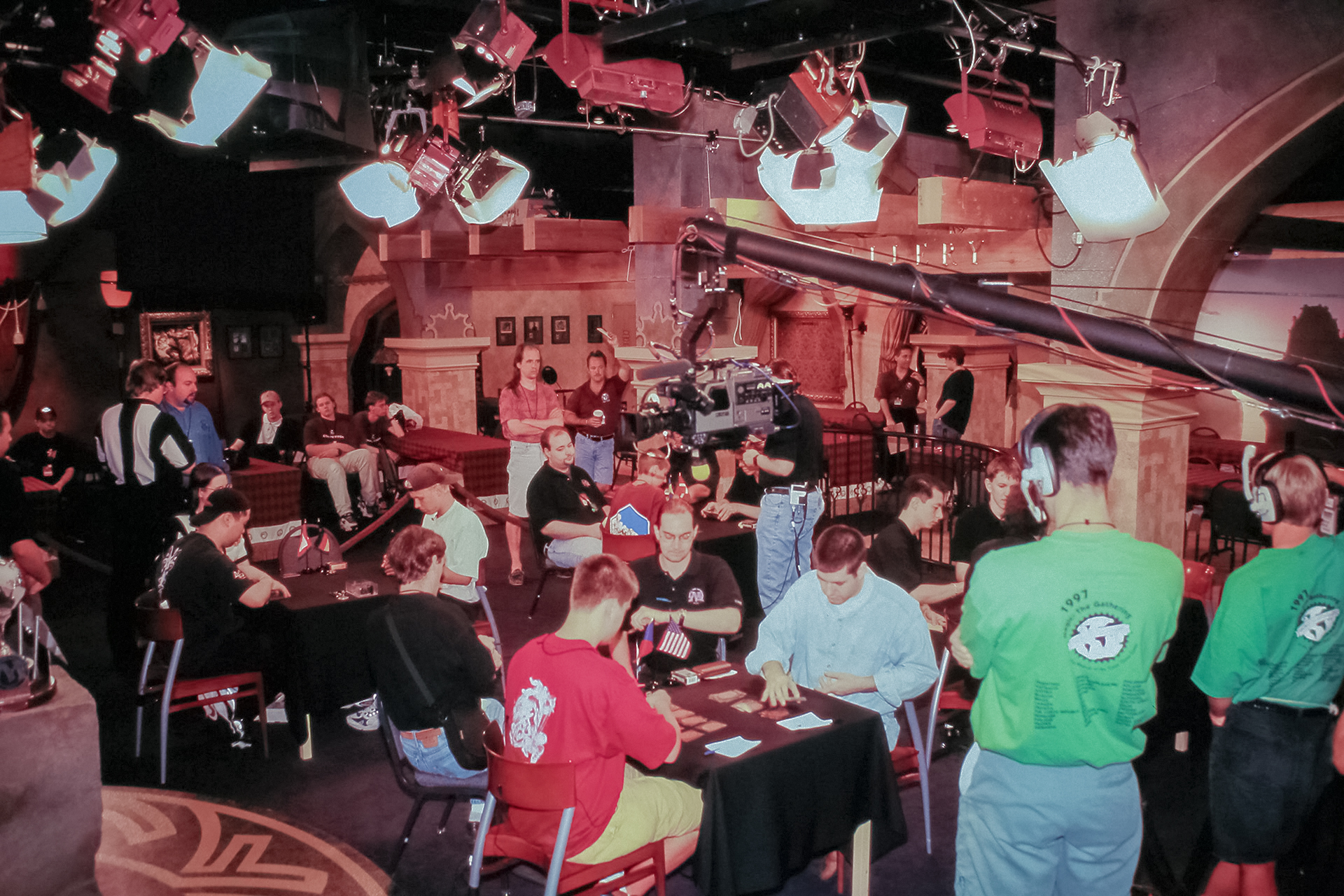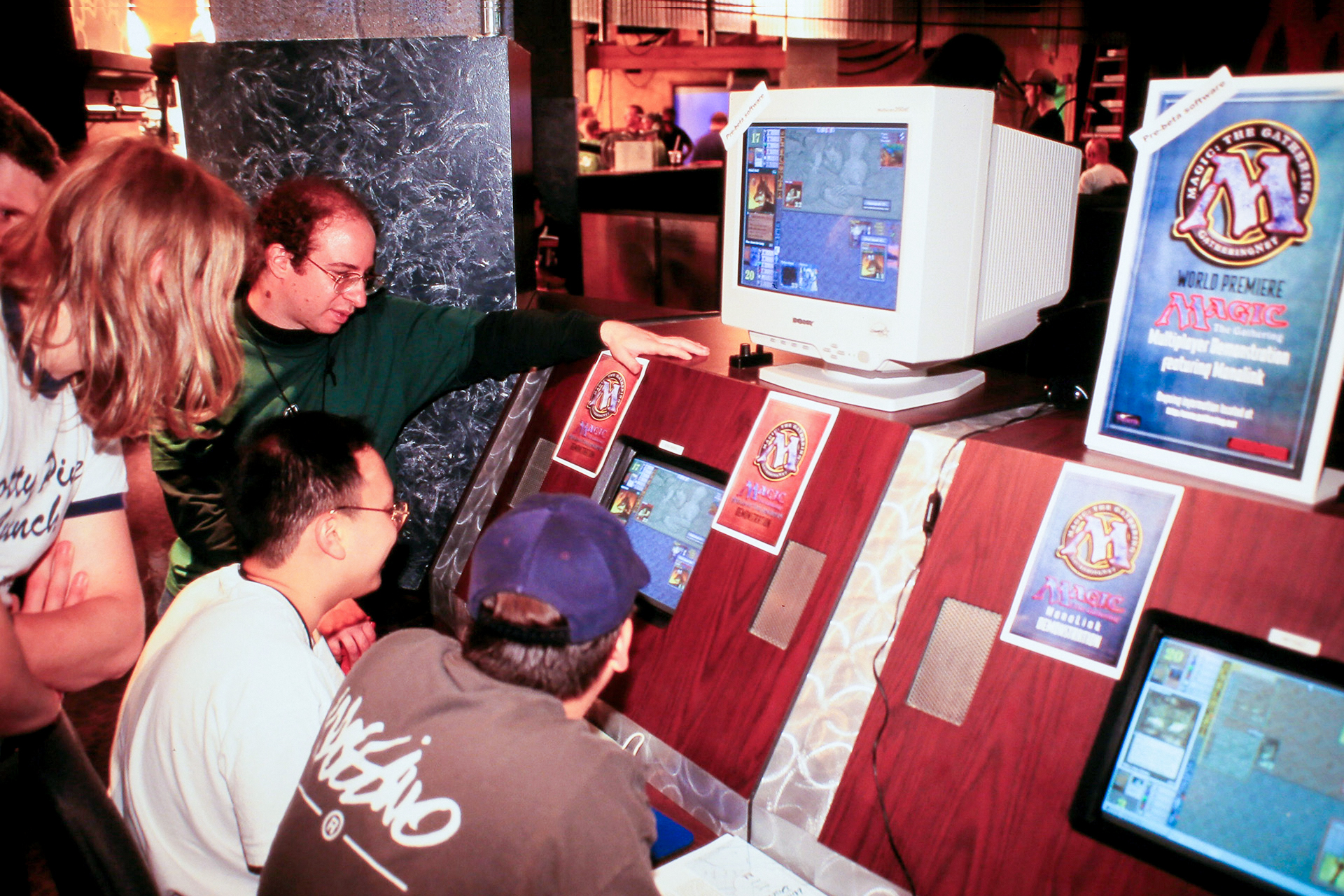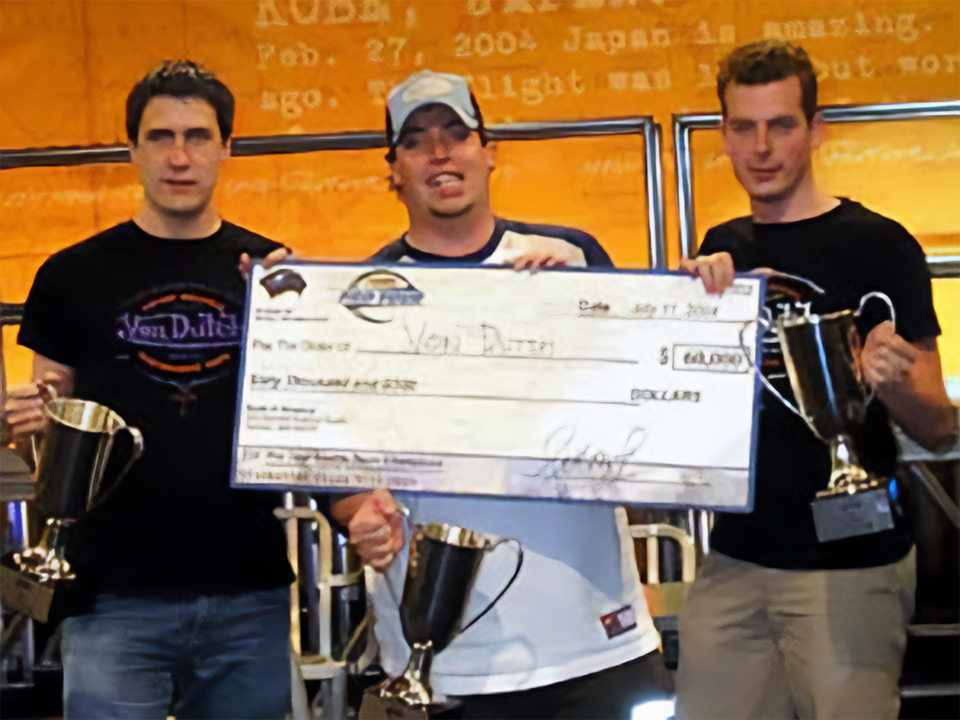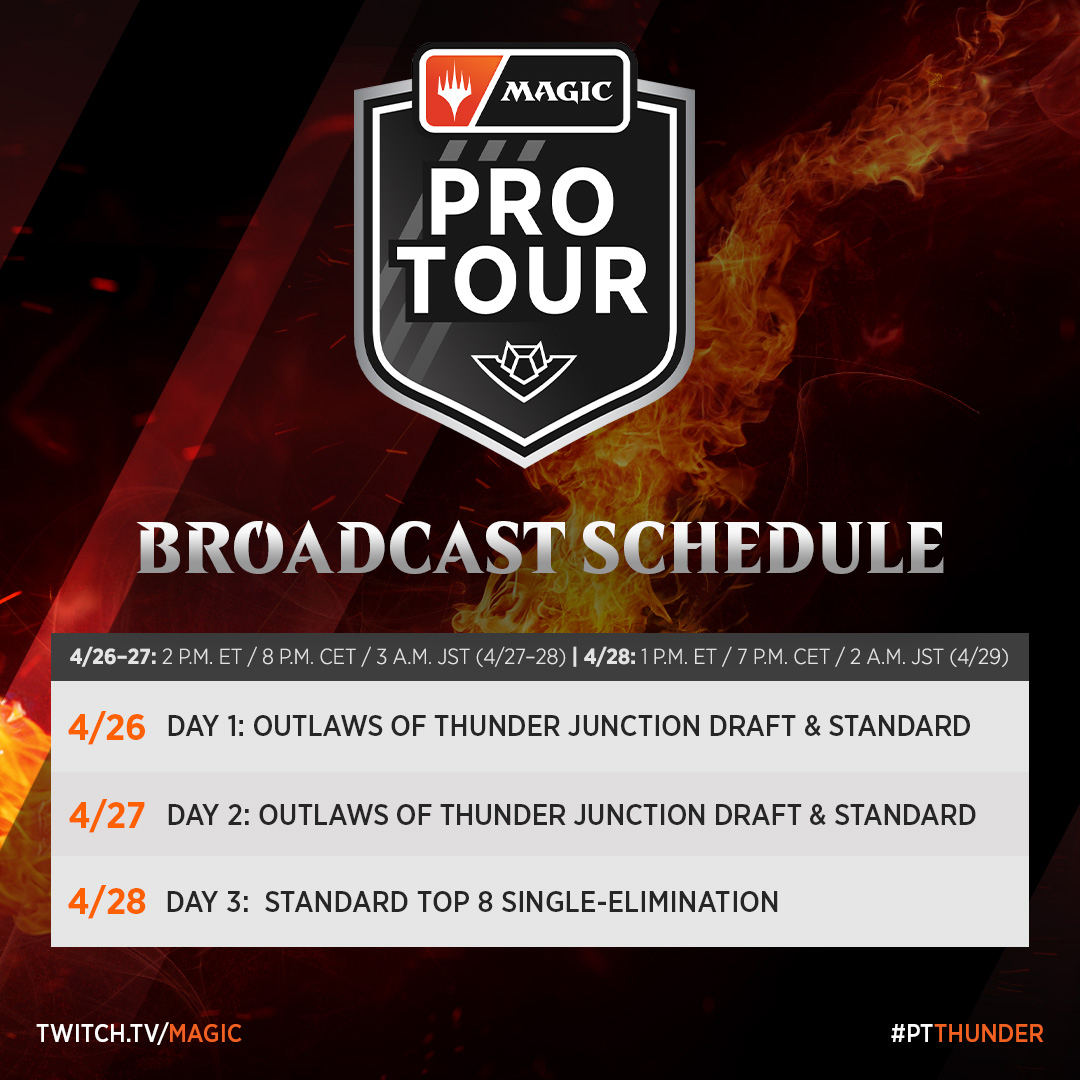In the beginning...
Wizards of the Coast has always been a Seattle company, from its inception in Peter Adkison's basement in the early '90s to the flagship Renton office with a dragon in the lobby.
The home of Magic: The Gathering has also been home to every type of tournament the game has ever hosted, from the inaugural Magic World Championship to the Pro Tour, and then Wizards of the Coast Invitationals and Grand Prix events to Magic Online Championships and more.
Seattle has seen every format—Standard, Limited, Legacy, Extended (Extended? Extended!), just to scratch the surface—which is fitting for a place that's also seen every step of Magic's long and storied history ever since Richard Garfield first said, "But what if the decks were asymmetrical?" (My paraphrasing, but it's the spirit of the thing.)
The year is 1995. Two different Jane Austen adaptations are in movie theaters (I know you care about this), and Braveheart wins the Academy Award for Best Picture, beating out Babe in what I can only assume was an upset for the ages. And at the SeaTac Red Lion Inn, Swiss Magic player Alexander Blumke wins the second-ever Magic World Championship with a deck he put together the morning of the tournament.
That 1995 Magic World Championship featured 71 players from nineteen different countries playing across three days, with five rounds of Sealed on Day One, five rounds of the newly minted Type II—now known as Standard—on Day Two, and a best-of-five Top 8.
"I really didn't believe I could win," Blumke said in an interview after the event. "I didn't have a deck when I got here, so I stayed up late the night before making one. Then the next morning, I realized that what I made would not win, so I changed it right before the competition."
None other than a recently hired Mark Rosewater covered the event, detailing the journey of American competitors Henry Stern and Mark Justice, who both made the Top 8, and another about the final match between Blumke and French player Marc Hernandez. Henry Stern would go on to become a member of R&D, while Mark Justice finished second at the Magic World Championship the following year.
Rosewater's coverage is a wild ride through a bygone era of Magic and featured, among other things, an Austrian player arm-wrestling someone to determine who would play first, a Southwest regional qualifier wrapping up well past 2 a.m., a player taking 25 minutes to make a single decision, and the hyphenation of "meta-game."
While the finals were full of powerful spells like
Blumke's Deck
Primary Color: Black (for card denial and creatures—
Secondary Color: White (just a sprinkling to deal with opponent's cards—
Other Colors: Blue (for a single spell—
Artifact Use: Backup for the card denial (Several copies of
Mana Producer Ratio: 40%
Creature Ratio: 9% (19% including
Non-Mana Artifact Ratio: 13%
Spell Ratio: 38%
Major Effect of Deck: Card denial with a few creatures to finish off the opponent
Interesting Note: Deck has quite a number of single spells (including
Sideboard: Mostly white and blue defensive cards (Circles of Protection,
Comment from Designer: "To be honest, I'm surprised it worked as well as it did."
Hernandez's Deck
Primary Color: White (for strong defense—
Secondary Color: Red (for two
Artifact Use: Used to shut down opponent's resources (with things like
Mana Producer Ratio: 37%
Creature Ratio: 0%
Non-Mana Artifact Ratio: 29%
Spell Ratio: 34%
Major Effect of Deck: Deck shuts opponents down and then kills them with
Interesting Note: Deck has two
Sideboard: Heavy red (including
Comment from Designer: "Once my deck locks in, my opponent cannot win."
528
299
Some decks from that year remain, but others are lost to time. So lost to time, in fact, that you could once qualify for the Pro Tour by solving a sideboarding riddle about them in The Duelist.
That Magic World Championship kicked off a four-year span of Seattle playing host to the event, with the World Championship returning to the area in 1996, 1997, and 1998. Those three years saw the addition of the Team World Championships and the rise of some of Magic's best-known names, like Jon Finkel's third-place finish in 1998 and Chris Pikula's sixth-place finish that same year. Both would go on to win Magic invitationals in following years. And while the events stayed in Seattle those years, they did get to move on from the Red Lion Inn, with subsequent Magic World Championships taking place at Wizards of the Coast headquarters.
The interview with Matt Place, part of the 1996 United States winning team (alongside George Baxter and Mike Long), is as much a snapshot of Magic in that era as it is a timeless story about the game:
Each event holds more stories than one article could possibly contain, like how in 1996, the event and its winner were commemorated with a one-of-a-kind card, 1996 World Champion. Or how the 1997 event included Rochester Draft, a format rarely seen in Magic's modern era where each card in each booster is laid out and selected one at a time where everyone can see every pick—an arduous and intensely skill-testing way to draft.
It would be 20 years after Magic's inaugural Seattle event when the Magic World Championship finally returned to the game's hometown.
A new era...
In the meantime, Seattle would play host to Grand Prix events, Magic Online Championships, and, in 2002 and 2003, the Magic Invitational and Wizards of the Coast Invitational.
The year is 2002. Justin Timberlake is making a go of a solo music career, Avril Lavigne drops a song that people will belt at karaoke until the end of time, and Nickelback tops the Billboard year-end hot singles with "How You Remind Me." I'm sure that these days they would love to be reminded of a time when they had a number-one single. In Seattle, sixteen of the best Magic players from the past year gather for the Magic Invitational. A full six of those sixteen are future members of the Magic Hall of Fame—Jon Finkel, David Humpherys, Brian Kibler, Gabriel Nassif, Olivier Ruel, Gary Wise—but for now, they're in Seattle to play against the best of the best for, among other prizes, a Magic Invitational card.
One of the most-enduring legacies of the Magic Invitationals were the invitational cards, with
Chris Pikula's
83771
227676
From the start, the Magic Invitational wasn't a traditional tournament. It was played round robin, with every player facing off once, and often featured specialty formats designed specifically for it, as well as special stickered cards by Mark Rosewater himself.
The first year the Magic Invitational was played on Magic Online was 2002, taking some of the strangest formats off the table, but it was the second year to include Mark Rosewater's Auction of the People. In brief, Rosewater solicited deck submissions from the public built around an alphabet challenge. Seventeen of those decks were then auctioned off to the Magic Invitational competitors, who could bid to play them with a combination of starting cards in hand and life total.
In the finals, Tomi Walamies played an aggressive Boros deck based around the letter "G" whose auction price had started him at five cards and 20 life. On the other side of the screen, Jens Thoren played a three-color deck built around the letter "V" that had put him to five cards and 18 life.
Of course, Thoren's iconic sad robot, the invitational card
The following year, an event largely lost to time also took place in Seattle: the Wizards of the Coast Invitational. Featuring a mix of R&D members, it included players Richard Garfield, Mark Rosewater, Randy Buehler, and event winner Bill Rose, one of the original Magic playtesters from the group that Garfield put together at the University of Pennsylvania.
The event included Standard rounds and a draft of different themed decks with names like Pressure Cooker, Trounce-O-Matic, and Zombies Unleashed. For his win, Rose was awarded the illustrious prize of having his chosen card,
The next year, Seattle finally played host to the Pro Tour for the first time. And while it was the first time Seattle hosted the Pro Tour, it happened to be the 50th Pro Tour in history. It was an auspicious event for Seattlebut less so for Phoenix Foundation, the legendary team of Kai Budde, Dirk Baberowski, and Marco Blume.
The only team to ever win multiple Pro Tours, in the Seattle showdown Phoenix Foundation failed to make Day Two for the first time since they started playing together in 2001. They were taken out by a team named—I kid you not—Ranko Bongo Slim Boy, in a match that Brian David-Marshall called "not as incredible as when Rocky beat Apollo, but close."
Von Dutch, a Netherlands team of Jeroen Remie, Jelger Wiegersma, and Kamiel Cornelissen, went on to win Pro Tour Seattle. It was the third Sunday appearance for both Remie and Wiegersma, and the fourth for Cornelissen, proving that Phoenix Foundation was far from the only juggernaut at the event.
And then the Pro Tour, like the Magic World Championship before it, departed for other shores, not returning until 2012. The first decade of the 2000s didn't completely abandon Seattle, though, with two different Extended Grand Prix events coming to Magic's hometown in 2000 and 2005.
A fresh decade...
The year is 2012, or 2015, or 2024, and though there are players Magic will never forget, a new generation of Magic players are making their mark on the game and fighting for their spot amongst Magic's greats.
In 2012, the renaissance of Seattle Magic events was underway, starting with the Players Championship. A combination of Modern and Draft, three different Hall of Fame players made the Top 4: Shota Yasooka, Paulo Vitor Damo da Rosa, and Jon Finkel.
A few months later, Magic players once again flocked to the city, this time for Pro Tour Return to Ravnica. It's an event perhaps best known for Stanislav Cifka's Second Breakfast Modern deck, a combo that he played to 15-0 in the Swiss. Cifka went on to win the event and let Magic players know that Eggs were still on the menu. (Sorry!)
Cifka's deck tech is a fascinating watch, will leave you with exactly the same understanding of playing the deck that you entered with and no more, and includes a story about Cifka keeping a no-land starting hand.
But "Eggs" as the winning deck led to mixing a local Seattle gaming institution (Mox Bellevue) with an on-the-nose gag from Rich Hagon and Brian David-Marshall:
Then, in 2015, the Magic World Championship finally returned. With a field of 24 players and a full four formats—Magic Origins Draft, Standard, Modern Masters Draft, and Modern—it was an event that launched Seattle into the new era of Magic World Championships. Going into the event, one of the top stories included Shahar Shenhar's back-to-back wins at the previous two Magic World Championships, so much so that the event trailer largely focused on that angle: watch it here.
It was a different era of Modern, with Affinity decks garnering the largest share of the metagame, followed by
In Standard, noted deck innovator Sam Black showed up with a mono-white devotion deck and went 4-0 in the Standard Swiss rounds, but
Manfield went on to win, securing the first premier event win of a career that would end up seeing him inducted into the Hall of Fame.
The next year, the Magic World Championship returned to Seattle, and again concurrently with PAX and as part of a larger celebration of Magic. It set the stage for the spectacle for the event, with players facing off on the gorgeous stage of the Paramount Theater in Seattle, which has played host to touring Broadway musicals and rock legends.
The event included Shadows over Innistrad / Eldritch Moon Draft, Standard, and Modern. The finals came down to the year's Draft master, Márcio Carvalho, and Constructed master, Brian Braun-Duin, both players who had fought to be at the World Championship over an entire season filled with travel, Magic, and stellar finishes. With Braun-Duin on Bant Humans and Carvalho on Bant Company, their best-three-of-five match lasted over two hours, with game three alone lasting over an hour.
In the final turns, Braun-Duin's team of Humans, including all-stars
Now, another Seattle event is approaching, and in a few short days, players will once again descend on Magic's hometown for a chance at the trophy and a spot in Magic history. In each decade of Magic's past, Seattle has seen some of the best players the game has to offer. With any luck, twenty years from now, someone will dig up this article, getting ready for yet another tournament as a new generation of players makes their mark on Magic.
You can watch all the latest Seattle action with Pro Tour Thunder Junction, broadcasting live at twitch.tv/magic April 26-28!









